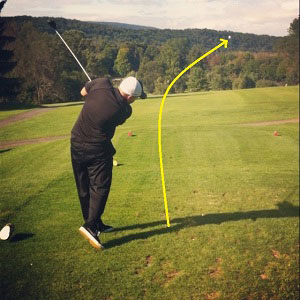
During the backswing, your left arm plays an important role in the golf swing. It helps anchor the club head to the path and provides control of the clubface during impact. The potential arc of your swing will be limited if your left hand is bent. You could end up with a cut shot or a golfer getting out on the grass. A straight arm, however, will allow you to make a powerful move into the ball and create a large arc.
A few key positions are helpful for keeping your left arm straight while you golf swing. Start by extending your left elbow straight across your chest. This will help you feel how your left side will bend in the swing. If your left arm does bend during the swing, your technique may be wrong.
If your left arm is bent at the end of the swing, you are probably compensating for rotational power with sheer arm muscle. This will make a swing difficult, as it makes it harder to get the club down to its ball consistently. You will be unable to release the club if it is too far from the ball.
Your left arm should be straight throughout the golf swing to improve your control and allow you to release the club easily. It is best to practice your left arm straight at the top of the swing. Also, it is a good idea practice with your left hand in the mid-downswing because that is when the club is most susceptible to hinge.
You can also use the right arm to keep your swing in shape. Your right arm should move approximately a foot from the setup position towards the top. Your right arm should move together with your body in order to maximize power. For a perfect swing plane, your left arm should be moved under your right. Then, slowly bring your right hand up to the body until the elbow touches the body.
FAQ
Do you have any tips on how to play golf properly?
Yes. You can take lessons at several schools to learn how golf is played. You will need to buy new equipment such as a set of clubs.
How is golf scored?
The scorecard is broken down into four distinct categories: Stroke Play (Par 3, Par 4 and Par 5), and Stroke Play (Par 3 & Par 4). Each category can further be broken down into strokes. To reach par, a player must play 18 holes (Par 72).
The lowest score wins.
Do I need any special skills to play golf?
No. All you need is a pair of walking shoes, a towel, and a set of clubs.
Statistics
- In the United States, the number of people who play golf twenty-five times or more per year decreased from 6.9 million in 2000 to 4.6 million in 2005, according to the [51] (en.wikipedia.org)
- In the United States, women made up 25 percent of golfers in 2021, which was up from 19 percent in 2011, and junior female golfers account for 35 percent or 1.1 million golfers.[50] (en.wikipedia.org)
- Buying a set of Titleist or Taylor-Made irons for nearly $1,000 is simply not necessary and likely a waste of money. (golficity.com)
- They do this by means of assessing and rating courses according to the average good score of a "bogey golfer," a player with a handicap of around 20. (en.wikipedia.org)
External Links
How To
How To Hit A Perfect Bunker Shot
A bunker shot is a type golf shot that you aim at a certain spot on the hole (the green) to ensure your ball does not bounce off the surface. This is achieved by taking advantage the green's slope. This is done to ensure that the ball travels as straight as possible towards the hole.
You want to play golf in the best possible line to get to your target point. You have to consider several factors such as how much distance away you are from the target, what kind of terrain you're hitting through, whether the ball needs to bounce off the ground or fly straight, and even weather conditions.
Understanding the laws of physics is essential to executing a flawless bunker shot. It is important to determine whether you are going uphill, or downhill. If you're facing uphill, you'll need to use a drawing club. You'll need to swing with an fade if you are facing downhill. Next, determine the speed at which your body can move to stop the ball hitting the green. This can be done by measuring the angle between your ball and the direction in which you are traveling. Finally, you'll need to know the size of the bunker you're aiming at.
After you have figured out these basics, you can begin swinging. Swing hard enough to let the ball go past the face of the club head but slow enough to keep it from bouncing off the green, just like you would when making any other shot. Once you've found the right speed and trajectory, you can begin your approach. Approach the ball slowly until you are close enough to see the landing area. After you have taken one last look at your ball, release it. If everything goes according to plan, you should be able to hit a perfect bunker shot.